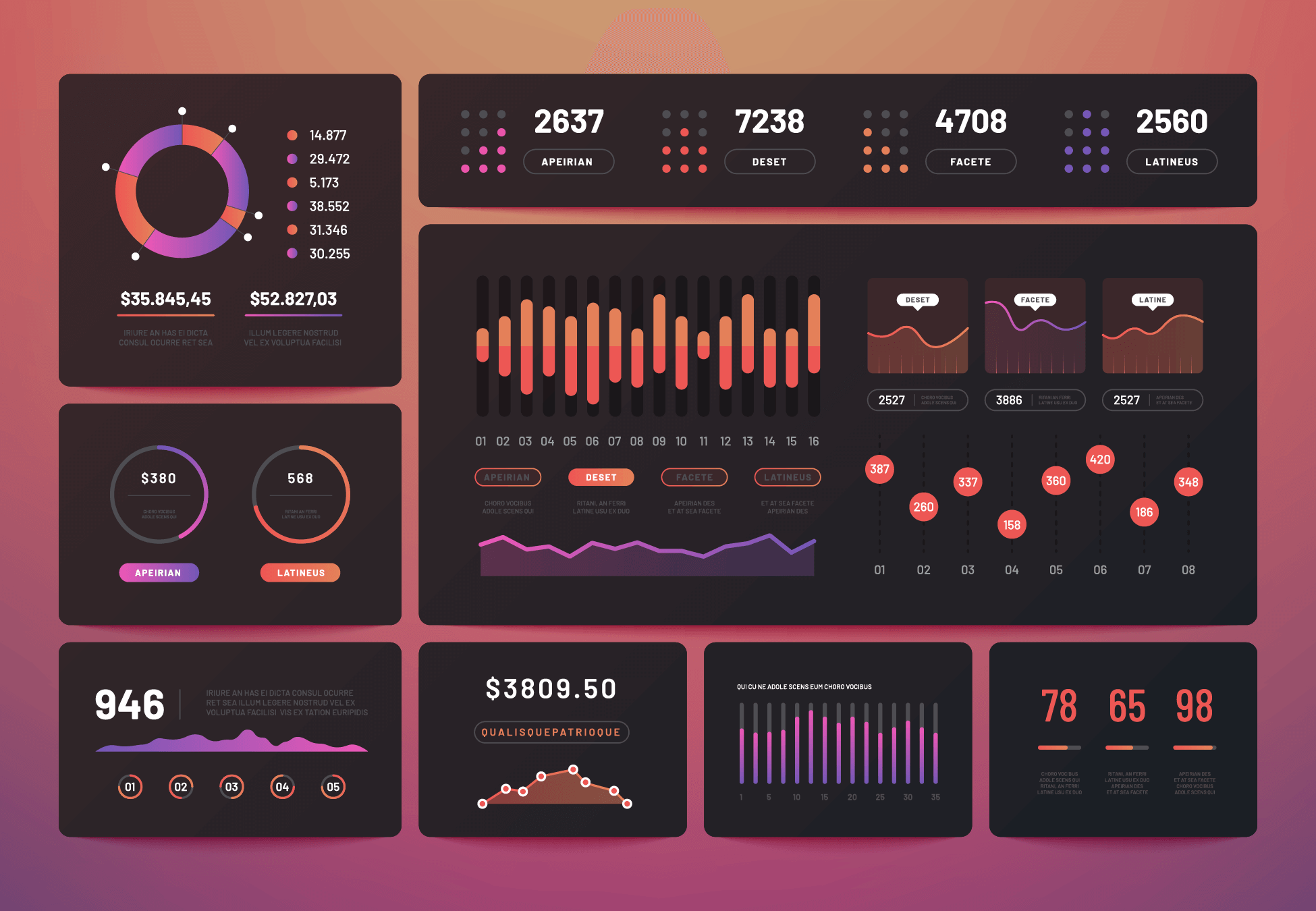Analytics have made a splash in the realm of marketing, to say the least. The need for data is more apparent than ever, as more brands are marketing themselves under the coveted category of “data-driven.” In reality, they are not becoming data-driven fast enough, if at all.
We can vouch for the fact that data trumps intuition, but aside from arming yourself with industry data that relates to your vertical for market research, it’s also vital to compile site data on your own site visitors. That’s where digital experience analytics solution enters the picture, and it does so in a substantial way.
Most web analytics platforms show how a websites is accessed, along with some of the activity that occurs on it. Granular digital experience analytics takes this further, in a concerted effort to measure digital customer experience (CX). As such, it offers acute data sets, visualizations and metrics that evaluate and quantify how visitors interact with the individual elements of your website. But not all user experience analytics solutions provide the same granularity of data.
Most analytics platforms do not take user insights a step further, so they do not give you a more granular performance review of your site or app, meaning that you wouldn’t be able to comprehend how each in-page element is used and how it contributes to a broad set of KPIs.
In short, user experience analytics is a functionality designed to give you insights into visitors’ user experience. It’s incredibly important for both marketers, web developers and designers alike, as it dictates their strategy and implementations. But not all DX platforms offer the same capabilities.
So why exactly does digital experience analytics matter? Let’s find out.
Understanding Your Customers
If you don’t understand your customers, your website will show, leading to reduced activity, heightened bounces and poor conversion rates. Digital experience analytics allows you to segment your audience based on their behavior, and unlock a much deeper understanding of their needs and expectations.
From what visitors are trying to achieve and how they want to go about achieving it, to what causes frustration along their customer journey, analytics gives brands a nuanced read of these occurrences. Pure play brands are masters at leveraging this type of customer intelligence as they hyper-target their offerings to specific segments. With this approach, they are not attempting to be all things to all users, but are tapping into the minds of their most profitable segments, implementing high levels of customization.
Behavioral analytics can highlight visitors’ distinctive behaviors on your website, such as where they are most engaged, where they click and how often, the frequency of their hovers on a particular part of a page, the time they spend per page or element and much more.
We recently helped, travel leader Pierre & Vacances identify customer preferences for targeted optimizations. After analyzing customer behavior on its holiday property search results page, the brand found that site visitors were interacting heavily with the “number of rooms” filter (it had a high click rate and a hearty dose of conversions).
However, this filter was lost among a wealth of other filtering options. Based on this intelligence, the brand placed the filter in the second position on the filter bar, making it easier for users to find it.
The moral of their story is that once you’ve figured out through DX analysis what your users’ precise intentions are, you can then go about improving your digital experience to allow them to seamlessly complete their intended tasks without incurring any frustration.
Additionally, it’s interesting to learn about online behaviors of visitors in different regions of the world. As per our Global UX Map, a comprehensive report on the user behavior of visitors in 7 countries, we’ve found just that.
For example, we learned that visitors China are happy to engage with visuals, with a slideshow click rate of 5.5, so adding product images on your China site makes for a great UX. On the contrary, using a lot of visuals like slideshows is less well-received by visitors in the US and Italy, which have the respective click rates of 1.3 and 2.5 on the slideshow, the lowest of all the surveyed countries.
In both of these cases, DX analytics has the prowess to empower digital teams with localizing knowledge that can assure a positive UX for global users.

Creating Data-Driven CX Decisions
Digital experience analytics matter where website design is concerned, as it dictates what the experience will look like for visitors. If it doesn’t, chances are, your analytics platform isn’t very robust and offers little else aside from a traditional traffic analysis.
A granular user experience analytics space empowers its users to make data-driven CX (customer experience) decisions, and if you couldn’t tell from this blog, CX is not something to ignore. It is critical for the sake of both acquisition and retention, especially the latter, which is important for maintaining a steady revenue stream.
With data providing multiple reference points to optimize your content, you can do so innovatively and confidently. An optimized CX will make it so that you can streamline your customer journeys and remove frustrations, the latter of which impedes conversions. It can also help you detect if there are any errors in the elements that yield conversions themselves, such as CTAs, form fields and buttons that signal making a purchase.
But it doesn’t end with conversion-bound elements. A deep experience analysis can identify a host of other faulty site elements which stir your site visitors into leaving. That’s where a data-driven analysis comes into play, finding pesky problems in the design and structure of your website that can have grim consequences on your CX.
A data-backed CX optimization plan acts as a security net for brands seeking to try new things on their sites. Perhaps there’s a trendy feature you want to try out or a new setup of a crucial site element. Delving into new implementations is a rocky road, but with data on your side, you’ll be informed as to what works and what doesn’t.
Furthermore, making data-driven decisions allows all team members to own business goals, measure the contribution of their revenue and quantify the ROI of the experience.
Making Headway in Conversions
After you’ve done your CX homework, testing what strategies work and keeping close tabs on how your website is used, you check to see the impact. Which ROI is more important than conversions? Most marketers would agree that conversions are of the utmost importance for a business if not one of the most important.
Aside from boosting conversions, digital experience analytics assists in all the steps leading up to conversions, as it visualizes user flows with customer journey mapping. Understanding how users navigate your site is the first marker of what needs to be improved, along with indicating what works and what drives interest among visitors.
As such, granular analytics provides the relevant data and metrics for CRO (conversion rate optimization). Optimizing conversions always starts with measuring the experience on your site and/or app. As for preserving retention, a chief business goal, digital experience insights will assure you know what works and what doesn’t — essentially giving you more knowledge into how to retain conversions by keeping hold of the same site visitors.
Getting The Most Out Of Digital Experience Insights
Digital experience analytics carry weight with the entirety of your user experience, as it can quantify a host of user data: their interactions, hesitations, frustrations, etc. on your website. Because of this, it should be a top-priority implementation into your marketing plans. However, not all user experience platforms have the same built-in capabilities — particularly the actionable, full-picture data of all the goings-on of your website.
For example, not all of such platforms analyze individual site elements and how they fare in traditional metrics, let alone more robust ones. So you should be selective when choosing your experience analytics software. Don’t forget: you ought to aim for retention over acquisition, as once your users visit your site and enjoy what they experience, the likelihood of them returning shoots up.

